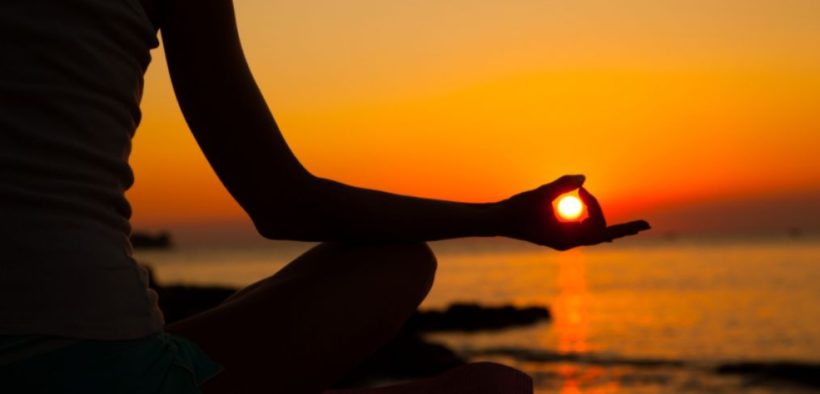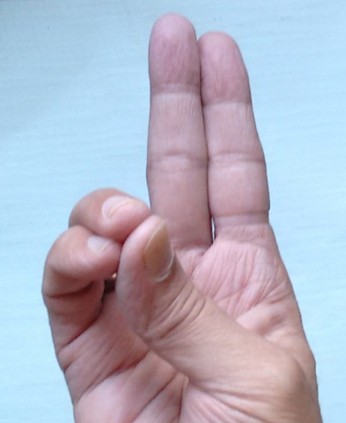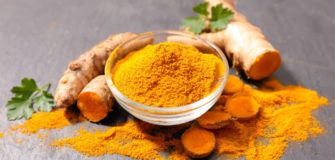Yoga – Prana Mudra

Prana Mudra Yoga improves breathing
By Dr. Ulhas Ganu
Genesis of Prana Mudra Yoga
- Prana in Sanskrit means life.
- Mudra in Sanskrit means Pleasure. Mudra has been defined as the activity which brings pleasure or pleases (मोदयते: is to please) the practitioner.
- Pranavayu in Sanskrit means Oxygen.
- This mudra improves both, the costal and the Diaphragmatic breathing thereby improving oxygen intake. This is one of the reasons why the name Prana Mudra appears an apt description.
Points to remember about Prana Mudra Yoga :
- Like the blood vessels reach out to each and every part of the body for nourishment of the body, the nerves also have a strong network from brain to the toe. The central nervous system and brain receives important information through the sensory (afferent) nerves spread across the body. This input is processed in the brain (and at the spinal cord level). As a response the brain sends all its messages through the motor neurons (efferent) nerves for action to the muscles for implementation i.e. movement.
- Nerves are classified into two types: Afferent Nerves and Efferent nerves.
- Afferent Nerves are the ones which carry sensory nerve impulses from the periphery towards the central nervous system.
- Sensory system collects information from the sensory receptors. This monitors the internal and external conditions of our body for passing them on to the central nervous system. It processes and takes action based on the type of the stimulus.
- Efferent neurons are motor neurons. They conduct impulses outwards from the brain or spinal cord to various organs and tissues of the body, the muscles or glands.
- Thus the action by the brain (or at the spinal cord level for reflex action) is based on the information collected through the afferent nerves. It passes through efferent based on the input after due processing for hazards or body requirements.
- In the Mudras conducted at the fingers’ level, the tip of finger of the same palm is (generally) connected with the thumb at the top or at the bottom of the thumb.
- There are though exceptions as there some Mudras where both palms are used to lock fingers (Shankha Mudra: the Conch Mudra and Ling Mudra).
- It is claimed that connecting the thumb to different fingers or combination of fingers (of the same palm) causes stimulation of different functions. It is conducted through afferent nerves stimulating brain center to signal different actions (passed on through efferent nerves) for action to different organs depending on the function stimulated.
- The most evident difference which holds this explanation acceptable is different effect on breathing as observed in Dnyana Mudra (depressed breathing or intake of air during inhalation) versus deep breathing and a feeling of full filling of lungs in Prana Mudra. That appears to be due to functional differences in the finger tips.
- Some of the Mudras appear to be tall claims and hence require validation through studies.
- However, the effects observed from Dnyana Mudra, Prana Mudra, Surya Mudra, Prithvi Mudra and Ling Mudra are fairly quick, within a minute which is a pointer to the validation of theory.
- Five Basic Elements have been described viz. Prithvi (Earth Element), Aap (Water element), Tej (Agni or Fire Element), Vaayu (Air) and Aakash (the Space or the Sky).
- Different fingers have been designated to represent different elements.
- The Ring Finger represents Earth Element.
- Little Finger represents Water Element.
- Thumb represents Fire Element.
- Forefinger represents Vaayu or the Air Element.
- Middle finger represents Aakash or the Space Element.
- It is claimed that connecting tip of each finger to the thumb at the top stimulates function of that element upwards. Touching the fingertip at the bottom of the thumb tones down that element.

Method of Prana Mudra Yoga:
- Sit in Swastikasana (or any other comfortable posture). Wrists resting on the knees, keep the palms spread open. (Figure …..).
- Keep the forefinger and the middle finger open. Start bending the ‘Ring Finger’ and the ‘Little Finger’ together while bringing the thumb nearer to them.
- Touch the tips (jointly) of the Little Finger and the Ring Finger by the tip of the Thumb (Essential Technique).
- The ‘Forefinger’ and ‘Middle Finger’ are held together straight.
- Even though the fingers are straight the palms are essentially kept relaxed.
- The Mudra is performed simultaneously by both the hands.
- Breathe normally while eyes are closed. Mind is on the breath.
- This makes it a meditative posture.
- For some people sitting in a cross-legged position or sitting on ground is not possible because of arthritic problems.
- For them it is possible to practice Prana Mudra by sitting in a chair. One can keep arms resting on the arms of the chair.
Contraindications of Prana Mudra Yoga :
- There are no contraindications.
- Only those who have trouble in bending the fingers post injury may not be able to do it.
- In the light of claims of boosting immunity response by practicing this Mudra people with rheumatoid arthritis are cautioned to not to do it.
Benefits of Prana Mudra Yoga :
- There is a feeling of full air taken in the lungs during inhalation. Both, thoracic and diaphragmatic breathing become extremely comfortable. It brings in a feeling of pleasantness.
- Regular practice of the Prana Mudra has been claimed to boost immunity helping to keep the diseases away. However, there is no experimental evidence to support this claim. Establishing or proving the other claims by comparatives studies or disproving them is certainly asked for.
- While climbing staircases or a passage up the slope, doing Prana Mudra eases the efforts by reducing breathlessness.
Positivity:
- The improvement in breathing gives a tremendous pleasant feeling and relaxes the mind. A meditative posture, it recharges the body and mind to energize the practitioner for work.
















